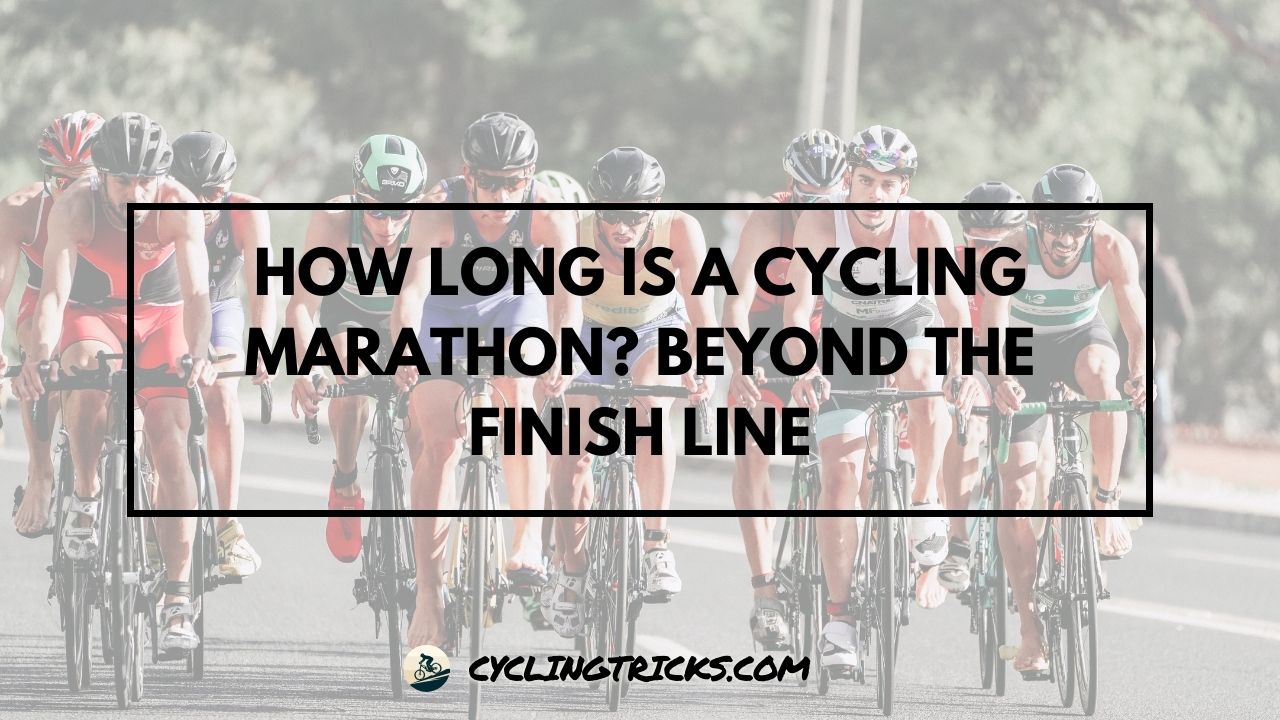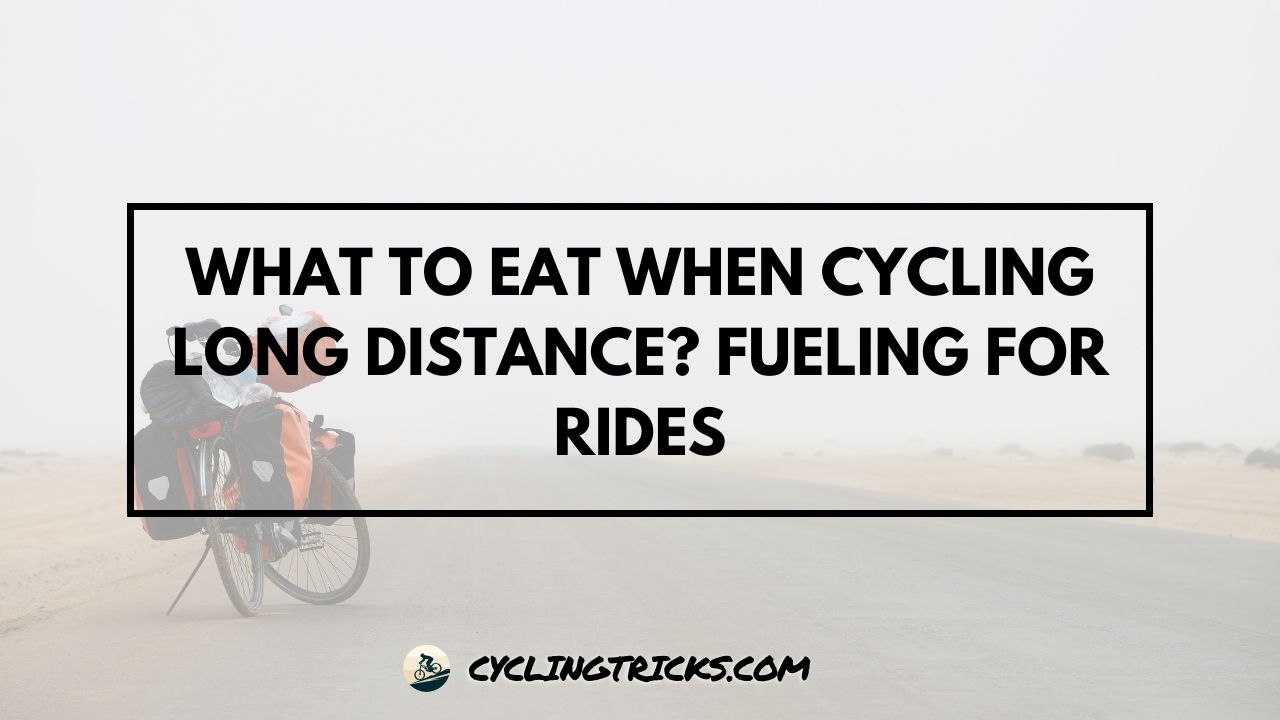Imagine pedaling over 3,000 miles across continents, climbing steep alpine passes, and racing against the relentless ticking of the clock.
This isn’t the plot of an epic adventure film; it’s the reality faced by cyclists who tackle events like the Race Across America (RAAM), one of the most grueling cycling endurance events in the world.
Far beyond your local charity ride, these competitions redefine the concept of a cycling marathon duration.
Whether you’re a seasoned road warrior or a weekend warrior looking to up the ante, understanding the scope of a marathon duration in cycling can be both awe-inspiring and daunting.
Such biking endurance challenges are not just about logging miles; they’re a test of mental fortitude, physical stamina, and the will to push beyond perceived limits. Are you ready to explore the lengths, literally and figuratively, that these athletes go to in pursuit of their two-wheeled dreams?
So let’s explore how long is a cycling marathon.
Key Takeaways
- Gain insights into the captivating world of cycling marathons and the endurance they demand.
- Discover what sets a cycling endurance event apart from your average bicycle race.
- Learn about the impressive distances that comprise a cycling marathon duration.
- Understand why participating in a marathon cycling event is as much about the journey as it is about finishing.
- Prepare to be inspired to conquer your own biking endurance challenge.
- Explore the personal achievements and transformations that come with completing a cycling marathon.
How Long is a Cycling Marathon? (Straight-Forward Answer)
There isn’t a standard distance for a cycling marathon. Cycling events vary in length, ranging from shorter road races (around 100 kilometers) to ultra-endurance challenges exceeding 300 kilometers.

Understanding the Cycling Marathon Duration
Delving into the essence of marathon cycling, we often question what exactly constitutes the hallmark of this grueling sport. Is it the sheer distance, the unyielding hours in the saddle, or the blend of passion and perseverance that defines its length?
Whether you’re a seasoned cyclist or new to the sport, comprehending the metrics behind the cycling event distance is crucial for both preparation and participation.
What Defines a Cycling Marathon?
At its core, a cycling marathon is not just any long-distance ride; it is a meticulously mapped marathon cycling course designed to test the very limits of endurance and willpower. The average cycling marathon length typically spans anywhere around 40 to 100 miles. However, this classification can broaden depending on the event’s nature and the organization behind it.
Comparing Cycling Race Distances
How does a cyclist gauge the scope of a cycling marathon? By comparing various bike race distances, one gains perspective on the magnitude of challenges they present.
From the sprint races that test speed over short distances to the grand tours whose legendary courses stretch over a thousand miles, each event offers a unique endurance narrative.
- Local Fun Rides: 15-30 miles
- Olympic Road Race: Approx. 150-180 miles
- Standard Cycling Marathon: 40-100 miles
- Grand Tours (Tour de France, Giro d’Italia): 2000-2500 miles spread across multiple stages
The Importance of Official Race Classifications
The distance and duration of competitive cycling challenges come with official classifications, marking a crucial element in an athlete’s training and racing approach.
Recognized cycling bodies maintain a spectrum of classifications that not only benchmark the standard cycling marathon length but also distinguish various levels of amateur and professional races. These classifications ensure that every cycling race duration adheres to respected parameters, providing equity and clarity in the competition.
Breaking Down Average Cycling Marathon Lengths
Whether you’re an avid cyclist or just venturing into the world of cycling marathons, understanding the cycling competition length and cycling race distance is crucial.
A cycling marathon’s challenge is often quantified not only by the distance of the cycling marathon but also by the average cycling marathon time. The cycling competition duration can vary significantly based on a multitude of factors, including terrain, climate, and the event’s level of competition.
Typically, an average cycling marathon can span anywhere from 50 kilometers (31 miles) for novice riders to well over 200 kilometers (124 miles) for professionals.
But let’s break down these numbers and look at how they translate into actual race day experiences. Below is an informative table that illustrates the averages sought by riders at varying levels of cycling proficiency:
| Event Classification | Average Distance | Average Completion Time |
|---|---|---|
| Amateur Local Competitions | 30-50 km (18-31 miles) | 1-2 hours |
| Regional Amateur Races | 70-100 km (43-62 miles) | 2.5-4 hours |
| National Amateur Races | 100-160 km (62-99 miles) | 3.5-5.5 hours |
| Professional Single-Day Races | 120-200 km (74-124 miles) | 4-6 hours |
| Professional Multi-day Stages | Up to 200+ km daily | Varies greatly |
As the competition scales up, both the length and duration extend, allowing riders to truly push their limits. Understanding these metrics is vital if you want to align your training regimen with your target race’s demands.
Moreover, it’s not just the length of the race that influences the cycling marathon time, but pacing strategies and personal endurance levels are equally important.
While professional cyclists may maintain an aggressive pace throughout most of the event, amateurs might aim for a steady, manageable speed, conserving energy to reach the finish line.
Before setting the pedal to the pavement, consider these variables to custom-tailor your approach to the marathon—a strategy that could mean the difference between hitting a personal best or hitting the proverbial wall.
How Long is a Cycling Marathon?
Embarking on a cycling marathon is an epic adventure that challenges both mind and body. Whether you’re eyeing a local event or setting your sights on a world-class competition, understanding the scope of cycling marathon lengths is crucial for your preparation.
In this section, we’ll explore everything from manageable short sprints to the Herculean efforts demanded by multi-day challenges.
From Short Sprints to Multi-Day Challenges
Not all cycling marathons are created equal. Some events favor speed over endurance, offering a swift dash to the finish line, cleverly designed for those looking to test their explosive power.
On the flip side, cyclists with a thirst for prolonged adventure can immerse themselves in jours-long or even week-long endeavors that traverse entire landscapes, states, or countries. These grueling events echo the ultimate question of mind over matter.
Factors Influencing Cycling Event Time
Several elements play a significant role in the duration of a cycling event. The terrain across which the event runs – flatlands, ascents, technical descents – can greatly affect times.
The weather conditions on the day – battling headwinds or slogging through rain – also weigh in. Not to mention the participants’ performance levels, with varying degrees of strategy, stamina, and speed coming into play.
Standard Cycling Marathon Length vs. Ultra-Marathons
A standard cycling marathon stretches to an impressive feat, however, the ultra-marathon pushes boundaries further into the realm of super-endurance sports.
Here, we distinguish between the two, aiming to enlighten you about the vast differences in cycling competition distance and times that these events present.
| Event Type | Average Length | Duration | Typical Terrain |
|---|---|---|---|
| Standard Marathon | 40-100 miles | 2-8 hours | Mixed, often road |
| Ultra-Marathon | 200+ miles | 10 hours to multiple days | Varied, includes off-road |
Whether you’re tackling the average length of a cycling marathon or you’ve set an audacious goal within the ultra-marathon bracket, understanding the cycling event duration is a fundamental part of your journey.
Remember, it’s not just the miles that make these races monumental—it’s also the stories, the scenery, and the self-discovery that unfolds along the way.
Preparation Tips for Your Cycle Race Duration
Embarking on a cycling endurance event entails much more than simply hitting the pavement; it’s an intricately choreographed dance of training, nutrition, and rest that must be painstakingly fine-tuned.
Trust this guide to prop up your preparation game for the impending biking endurance challenge, ensuring you’re poised at the starting line, primed for success in your cycling marathon preparation.
Training for Endurance
Your journey to conquer a cycling race duration begins with disciplined training. Build your endurance by progressively increasing your mileage, factoring in long rides that mimic the marathon’s demands. Intersperse these with high-intensity interval training (HIIT) sessions to boost your stamina and speed.
Never underestimate the power of cross-training to enhance your overall fitness and shield against injury. Remember, adaptation is key, so listen to your body and adjust your training intensity accordingly to avoid burnout.
Nutrition and Hydration Strategies
As your training load scales up, so should your attention to nutrition and hydration. Fine-tune your diet to fuel the arduous efforts; complex carbohydrates, lean proteins, and heart-healthy fats are the cornerstones of a cyclist’s sustenance. Stay vigilant about your hydration—both during training and on race day—to maintain peak physical and cognitive performance.
Dabble with nutrition strategies during your training to discern what sits best with your gut, because the last thing you want is a nutrition mishap leaving you sidelined.
Rest and Recovery: Timing Your Taper
Lastly, honor the crucial role of rest and recovery. Time your taper to gradually decrease your training volume in the last few weeks before the event. This strategy allows your muscles to heal and your energy reserves to peak.
Succumbing to overtraining is tantamount to self-sabotage. Instead, embrace rest as a vital component of training, because it’s during these periods of repose that your body consolidates the gains of your hard work. Sleep, often ignored, is the ultimate form of restoration—cherish it.









